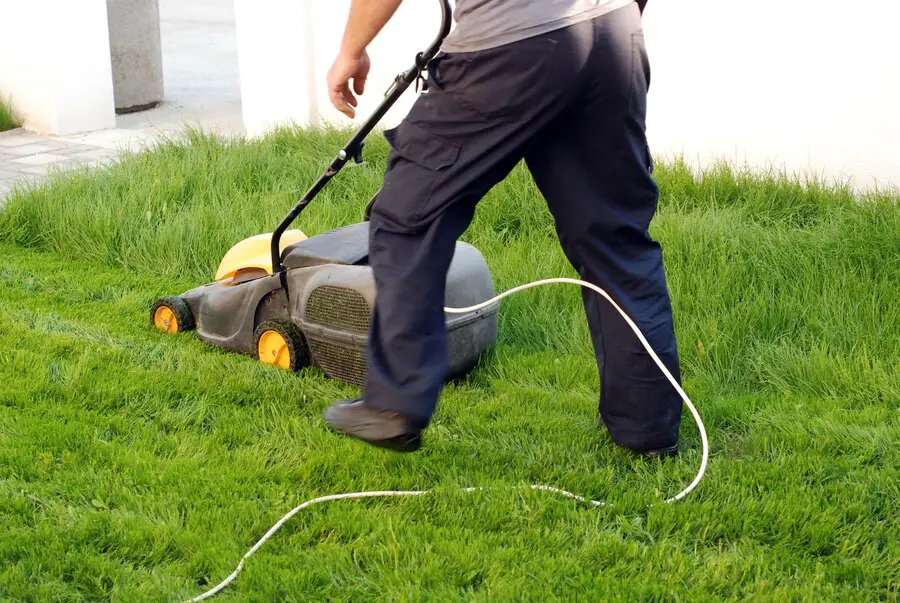
Maintaining a healthy and lush lawn requires a consistent care routine throughout the year. By following a seasonal lawn care schedule, you can ensure your grass remains vibrant, green, and resilient. Here’s a comprehensive guide to help you achieve optimal grass health with an easy-to-follow lawn care plan.
Spring Lawn Care: Rejuvenate and Prepare for Growth
Spring is the time to wake up your lawn after the winter dormancy. The soil temperature begins to rise, making it an ideal time to prepare your lawn for new growth.
- Rake and Remove Debris
Begin by removing any fallen leaves, branches, or other debris from your lawn. This allows sunlight and air to reach the grass, promoting healthier growth. - Aerate the Soil
Aeration helps alleviate soil compaction and ensures that water and nutrients reach the grassroots. You can use a lawn aerator to perforate the soil, creating holes that allow better absorption. - Fertilize Your Lawn
Apply a balanced fertilizer to give your grass the nutrients it needs for vigorous growth. Choose a fertilizer with a mix of nitrogen, phosphorus, and potassium, which are essential for healthy grass development. - Overseed the Lawn
Overseeding is particularly important if your lawn has bare patches. Choose a high-quality seed suited for your grass type and climate. This will encourage thick, lush coverage as the weather warms.
Summer Lawn Care: Maintain Health and Prevent Stress
The summer months can be harsh on your lawn due to high temperatures and drought conditions. Proper care during this time ensures your grass stays healthy and vibrant.
- Water Deeply and Less Frequently
Watering deeply encourages grass roots to grow deeper, making your lawn more drought-resistant. Water in the early morning to reduce evaporation and promote absorption. - Mow Properly
Keep your lawn at a higher cutting height during summer. This helps the grass retain moisture and provides shade to the soil, reducing weed growth and soil erosion. - Fertilize with Slow-Release Products
In summer, opt for a slow-release fertilizer. This provides consistent nutrition to your lawn over an extended period, ensuring it remains strong without the risk of burning from quick-release options. - Control Weeds
Weeds can quickly take over a lawn during the summer. Use pre-emergent weed control products to prevent weed seeds from germinating, and spot-treat any existing weeds.
Fall Lawn Care: Prepare for Winter and Enhance Resilience
Fall is one of the most crucial times for lawn care. The cooler weather and increased rainfall create optimal conditions for grass to establish deep roots before winter arrives.
- Aerate Again
Aerating in the fall helps reduce compaction and promotes root growth. This will ensure your lawn can absorb nutrients and water throughout the winter. - Fertilize with a Winterizing Mix
Use a fertilizer specifically designed for fall, which is high in potassium and phosphorus. This will strengthen your grass and improve its ability to survive through the cold months. - Rake Fallen Leaves
Excessive leaf cover can smother your grass and lead to fungal problems. Rake up fallen leaves regularly to allow your lawn to breathe and receive sufficient sunlight. - Overseed for Thickening
Fall is the perfect time for overseeding because the cooler temperatures and consistent moisture help the seeds germinate. Overseeding now will ensure a thicker, healthier lawn come spring.
Winter Lawn Care: Protect Grass and Prevent Damage
During winter, most lawns enter a dormant phase, but that doesn’t mean you can neglect them completely. There are a few steps to take to protect your grass and ensure it bounces back in spring.
- Avoid Foot Traffic
Minimize walking on your lawn during the winter months. Excessive foot traffic can damage the grass and compact the soil, making it difficult for the grass to recover in spring. - Keep Snow Away from Grass
If you experience heavy snowfall, avoid piling snow on your lawn, as it can smother the grass and lead to fungal growth. Clear the snow gently and make sure it doesn’t accumulate in one spot. - Limit Fertilization
Do not fertilize your lawn in the winter, as grass is dormant and not actively growing. Fertilizing at this time can lead to nutrient waste and potential damage.
Conclusion: A Year-Round Approach to Lawn Care
Maintaining optimal grass health requires consistent care throughout the seasons. By following this seasonal lawn care schedule, you can promote strong roots, vibrant growth, and a lush lawn that will thrive year after year. Start with spring rejuvenation, keep up with summer maintenance, prepare for winter in the fall, and give your lawn the protection it needs during the winter months. With regular attention, your lawn will remain healthy, beautiful, and resilient no matter the season.



